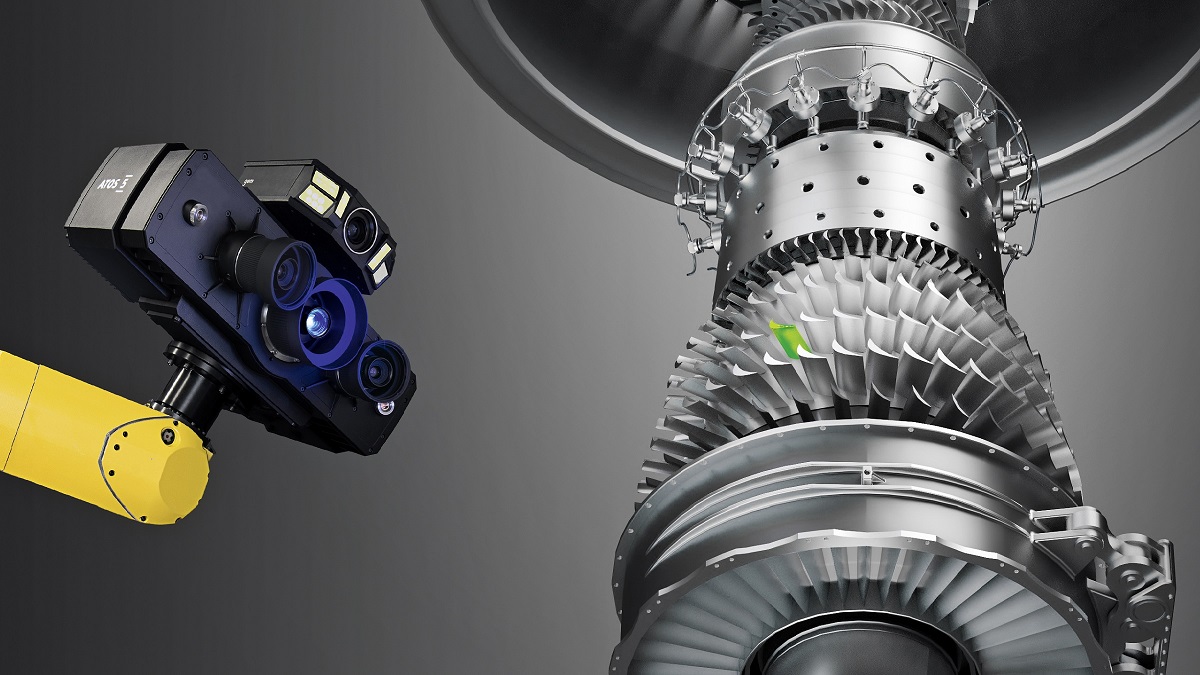3D Scans for Quality Control
In today’s business world, quality controls have become an important building block. The inspection forms an important part of the quality inspection regardless of the respective industry. Technical advances in manufacturing technology expand the possibilities of constructions considerably. The need for better inspection methods is growing to the same extent. Inspections are important and always will be. The quality check enables constantly growing perfection and optimization. 3D scanning for quality inspection is an important feature of today’s industry. In this article, the engineers at Mako GmbH explain why 3D scans are so important for quality testing.
3D scans for quality inspection: what you should be aware of
The need and growth of inspections in today’s market is enormous. There is general agreement on this. Badly carried out inspections can lead to tearing Achilles tendons in the production process. In this post, we will therefore discuss how to avoid bad inspections. Quality management is only as good as its user. And this user is only as good as the tool available to him. The task is therefore to find the right tool for the process. A few things should be considered here. We will go into these things below. We have divided them into categories.
The complexity
We all strive to continuously improve our finished design. This is important in order to be able to keep up with the competition. However, parts to be inspected are becoming more and more complex. You should therefore ask yourself the following questions:
- Are my parts to be inspected simple or complex?
- Should we change the respective design and make it more complex in the future?
- Do you currently have the right tools for an optimal inspection?
- Will the right tools for an optimal inspection be available in the future?
The cost factor
The question we all ask ourselves all the time is: what does quality cost? What are the respective costs that
- in case of rejection,
- while the development,
- during production or
- in the case of a return by the customer
attack?
The evaluation of market trends
Understanding the market and its impact on their business operations is neglected by many. The following things should be observed here:
- Where is the trend going?
- Are my tools for the inspection up to date?
- Are my inspection tools out of date and should they be replaced?
User-friendly operation
Let’s imagine that we are looking for a new employee for quality control. With regard to the tools and tools to be used, you should ask yourself:
- Do we need a higher level of education to use the tool?
- Can I quickly and easily instruct a new employee on how to operate it?
- Or does a new employee have to already have experience and knowledge in the respective area?
Diversity
Tools will always reveal some uncertainties. However, there are also tools that have a higher error rate due to poor operation. Humans are prone to error. The likelihood of errors should therefore be reduced as much as possible.
Accuracy
Most companies place the greatest emphasis on accuracy when choosing their inspection tools. Choosing a device with high precision ensures reliable measurements. Perfect design adjustments are often the goal. It is important to avoid iterations.
The tempo
Faster throughput times mean that problems can be identified more quickly. The result is that less money is wasted throughout the process. Especially when the respective product is still in development or in the first production stage.

3d render of a generic looking jet turbine
Why are 3D scans important for quality inspection?
3D scanning technology was invented in the 1960s. At the time, however, it was more of a conceptual prototype and was at the beginning of its development. However, it has developed rapidly over the past six decades. It ultimately became a user-friendly handheld device. They made scan-to-print, reverse engineering and inspections for quality control possible.
The 3D scanner market
The market for 3D scanners is incredibly large. The search for applications of PPAP and first article inspections should begin with the metrological variety of scanners. Metrology scanners are determined by a set standard for inspection tools, typically a NIST college (which stands for National Institute of Standards and Technology).
For you, this means the certainty that the data extracted by the respective scanner is highly precise and repeatable. You then have a tool with which extremely reliable measurements can be carried out independently of the respective operator. This significantly reduces the risk of human error.
Technology and progress
Today, 3D scanners can capture data extremely quickly. EinScan’s new HX handheld scanners, for example, can acquire data at an impressive speed of 1.2 million measurements per second. Compare this with conventional measurement methods. When using a CMM or a depth gauge to collect data on flatness, you need a massive amount of time and measurement points to get an accurate result. A 3D scanner ensures enormous speed here. It measures the evenness precisely and reliably within a second.
Versatile areas of application
The majority of 3D scanners can be used in a variety of environments. This is made possible by the portable handling. And through positioning goals for alignment. A quality inspector is no longer dependent on the laboratory. He can simply go to the workshop or to the production line and inspect a part there. The places where 3D scanners can be used are hardly limited. They are extremely versatile.
Precision and usability
Most of the 3D scanners on the market require minimal training. The devices are mostly plug-and-play capable. This increases the user friendliness. The biggest advantage, however, is the precision. Looking at the accuracy of 3D scanners, it turns out that a very large area is covered. For inspection purposes, the focus should always be on measuring accuracy. In the case of portable 3D scanners, the accuracy of the devices is on average 0.05 to 0.005mm. This corresponds to a size that is smaller than the thickness of a human hair.
Knowing where exactly your inspection tool is in the current industrial market could be a game changer for you. Using sub-optimal tools and tools so far could cost you more money than you think. The manufacturing industry is growing steadily. The demand for complexity is growing in the same proportion. 3D scanning has taken inspection to an unprecedented level with precise and reliable measurements, enormous speeds and a high level of user-friendliness.
The Mako-Technics team …
Hopes at this point that this article has given you an answer to the question of why 3D scans are so important for quality inspection today. If you have any further questions or suggestions, please contact us at any time. The engineers at Mako-Technics attach great importance to compliance with German quality standards. We offer professional know-how made in Germany. Make us your partner. Benefit from our expertise.
For more topics related to reverse engineering, take a look at our blog.






